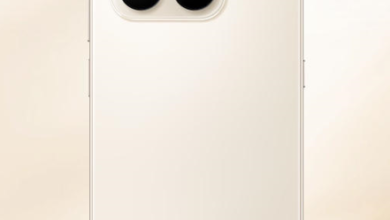How Do Folding Phone Hinges Work?

Folding phones have transformed the mobile device landscape, captivating users with their innovative designs. Central to their functionality is the hinge, a marvel of modern engineering. These hinges facilitate smooth transitions between phone modes, letting screens fold effortlessly without damage. Understanding the intricacies of hinge design unveils the blend of art and engineering that powers these tech marvels. From mechanics to materials, each element is crafted to guarantee a satisfying, durable, and seamless user experience.
Evolution of Foldable Hinge Designs
From Single to Multi-Axis Hinges
Early folding phones utilized single-axis hinges, limiting movement to one dimension. As demand for more versatile devices grew, engineers developed multi-axis hinges, offering greater flexibility and screen fluidity. This evolution allowed devices to assume various shapes and forms, enhancing functionality. Multi-axis hinges provide the versatility modern foldable gadgets require, emerging as crucial components in the development of advanced folding phones.
Innovations in Trifold and Z-Fold Mechanisms
Trifold and Z-fold designs represent breakthroughs in foldable phone technology. These mechanisms allow phones to fold in two or more sections, resulting in compact form factors with expansive screen capabilities. Such innovations challenge traditional design constraints, enabling a balance between portability and display size. By leveraging sophisticated hinge systems, manufacturers offer unique user experiences that redefine mobile device utility and aesthetics.
Impact of Hinge Design on Device Form Factors
Hinge design directly influences a device’s form factor, affecting everything from thickness to weight. Slim, compact hinges allow for sleeker devices, meeting consumer demand for portability without sacrificing screen size. Engineers tailor hinge dimensions and mechanics to complement device aesthetics and functionality. The right hinge creates harmony between a phone’s physical design and its operational capabilities, crucial for market success.

Core Components of Hinge Mechanisms
Gear Systems and Torque Distribution
Hinge mechanisms rely on precision-engineered gear systems to evenly distribute torque during folding. This balanced torque control ensures smooth hinge motion and prevents localized stress that could damage the display. By fine-tuning these gear configurations, manufacturers enhance structural stability and minimize wear. Such innovations are essential for maintaining the performance and reliability of foldable phones through extensive daily use.
Materials: Alloys, Polymers, and Composites
Durability and flexibility in foldable phone hinges are heavily influenced by material selection. Engineers commonly employ high-strength alloys like titanium or stainless steel for hinge cores, delivering structural resilience. Simultaneously, polymers and composites provide the necessary elasticity to accommodate movement. This material synergy enables hinges to endure repeated bending, preserving device integrity and ensuring long-term performance in various usage scenarios.
Dust-Resistant and Debris-Blocking Features
Protecting foldable phone hinges from dust and debris is critical for longevity and performance. Modern hinge designs integrate advanced barrier systems—such as mesh screens, seals, or brushes—that block particulate entry into delicate mechanical zones. These features maintain smooth operation and prevent internal abrasion. By mitigating environmental risks, manufacturers help users enjoy durable devices that remain functional and visually appealing over time.
Engineering Challenges and Solutions
Balancing Flexibility with Structural Integrity
Creating hinges that strike the right balance between flexibility and strength is a core design challenge. Excess rigidity may damage the screen, while too much flexibility can weaken the phone’s structure. Engineers address this by using precision mechanics and adaptive materials that allow safe folding without compromising device stability. This balance ensures both user comfort and long-term device durability.
Minimizing Crease Visibility and Screen Stress
Visible creases and screen stress remain critical concerns in foldable phone design. Manufacturers continuously refine hinge mechanics and display layering to reduce these imperfections. Innovations like optimized tension distribution and floating plate mechanisms help prevent pressure points during folding. These improvements lead to smoother screen surfaces and better user experiences, ensuring foldable phones remain visually appealing and functionally robust.
Ensuring Longevity Through Rigorous Testing
Manufacturers conduct rigorous durability tests to assess and refine hinge performance in foldable phones. These simulations replicate years of folding, accidental drops, and harsh environmental exposure to uncover potential weaknesses. Engineers use the findings to improve design and strengthen structural integrity. This exhaustive testing process ensures foldable phones deliver reliable, long-lasting performance, meeting the high expectations of users who demand durability, functionality, and quality in real-world usage conditions.
Conclusion
The engineering behind folding phone hinges combines creativity and precision, driving innovation in mobile technology. By exploring the evolution of hinge designs, advanced materials, and solutions to complex mechanical challenges, manufacturers create devices that are both durable and dependable. The HONOR Magic V5, featuring a shield-grade steel hinge tested for 500,000 folds, exemplifies this craftsmanship. These engineering breakthroughs enhance usability and push the boundaries of what’s possible in modern smartphone design. As a result, foldable phones are no longer experimental—they are refined, resilient, and ready for everyday life.






